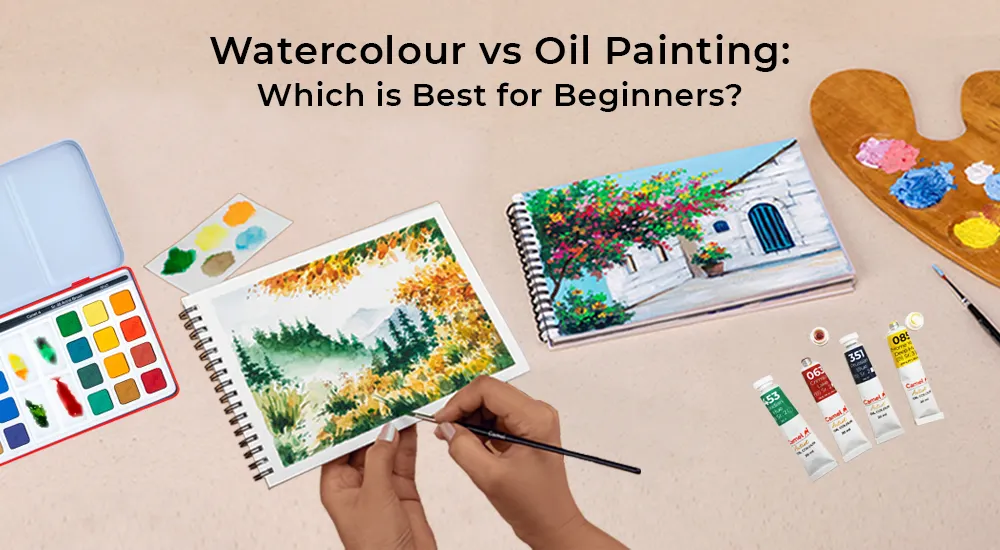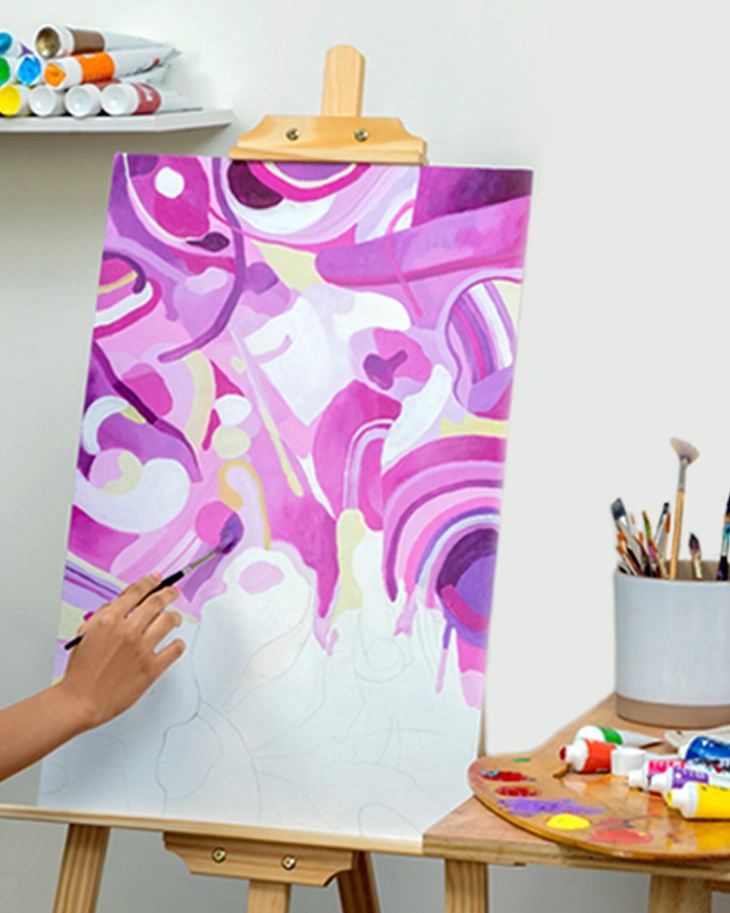Painting is a common way to express feelings and capture moments on paper. People paint with different mediums like watercolours, oil paints or acrylic colours. We, as kids in schools or beginner art classes, have used watercolours. But the question is - are watercolours the best for people who are just starting to paint? Let's look at the differences between oil colours and watercolours. This will help you choose which one is better when you start painting.
1. Watercolours Dry Faster
Watercolours dry faster. This simply allows you to finish and frame a painting faster. Once watercolours are applied to paper, the pigment absorbs quickly. The quick drying time is advantageous if you are painting multiple layers or working on a colour gradient.
For such cases, watercolours from the Camel Water Colours range allow you to build up colour efficiently, making them perfect for students and beginners. Once you get acquainted and want to work on landscape or floral paintings, you can try the Camel Artist Water Colours. The pigments are vibrant and transparent. It is ideal for achieving delicate effects in landscapes or floral paintings.
2. Watercolours Are Easier to Clean
Watercolours are easy to clean up. You can clean the brushes with just water. This makes it an accessible option for beginners. You can have a painting kit with just Camel Water Colours, water brushes, and watercolour paper. This kit is easy to carry when you travel or paint outside. Watercolour paper costs less than canvases or panels, so it's cheaper for new painters. This makes it a good choice if you're just starting to paint.
Mistakes Are Easier to Fix with Oil Paints
Oil paints dry slowly, giving you enough time to fix your mistakes. If you mess up, just scrape off the paint with a palette knife or wipe it with a cloth. This works best when the paint is thin. You can paint over mistakes. You can even put light colours over dark ones. This helps beginners a lot. Those who are still learning how to use brushes and mix colours, can fix things as they go with oil colours. Camel Student Oil Colours is a good option for beginners if they want to try out oil colours.
Colour Vibrancy: Oils vs. Watercolours
Oil paints have rich pigment. You can add layers of oil paint to make colours deeper and more intense. Watercolours are pretty transparent. They naturally produce softer and more delicate hues. If you like light, airy paintings, you might prefer watercolours. But if you want to try deep, eye-catching colours, oil paints are probably better for you.
Oil Paints Offer More Control Over Depth
Oil paints are great for creating dark shadows and highlights. You can also build up layers. If you're new to painting, oil colours are nice because they let you fix mistakes easily. You can try cool painting tricks without worrying too much about messing up.
In comparison, watercolours excel at creating soft gradients. This makes oil paints a better choice if your goal is to experiment with light, shadow, and form.
Watercolours Need Less Materials and Preparation
You need to buy more stuff when you start oil painting. You must get brushes, a palette, linseed oil, and primed canvas or paper. You also need a room with good airflow because oil paints have quite a strong fragrance. Watercolours are easier to start with. You just need brushes, water, and paper. If you're new to painting and want to start right away, watercolours are simpler. You don't have to worry about mixing different liquids or getting canvases ready.
Which is Best for Beginners?
Both watercolours and oil paints have their own advantages. Your choice depends on what you want to do. Oil paints let you fix mistakes, work slowly, and make bright, detailed paintings. If that seems like your style, choose oil paints. Watercolours dry fast, are easy to carry, and need less setup. If this is what you prefer, start with watercolours.
If you're new to painting, try Camel Student Oil Colours to learn oil painting tricks or use Camel Water Colours to start with watercolours easily. As you get better, you can switch your material to Camel Artist Oil Colours or Camel Artist Water Colours. These will make your paintings even better.
No matter which one you pick, both watercolours and oil colours let you be creative. So grab your brushes and start painting.
Did this article help you learn something new?
Share your thoughts with us in the comments below.
Leave a comment

Comment added
Comment updated
Comment deleted
More inspiration
“
“Art heals all my feels.”


